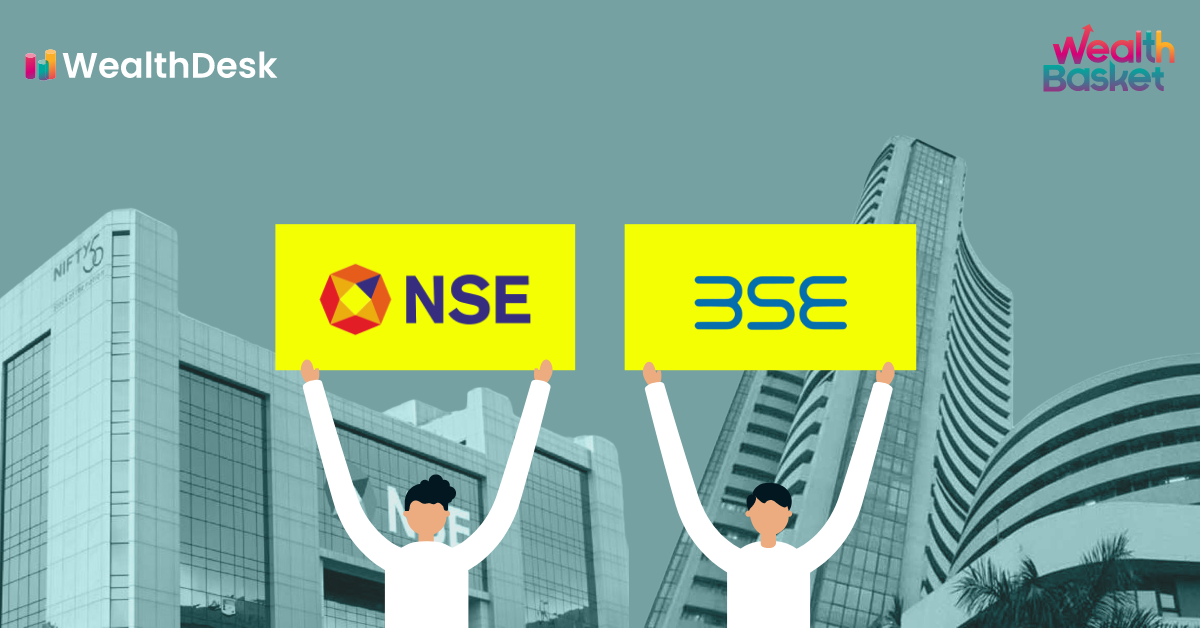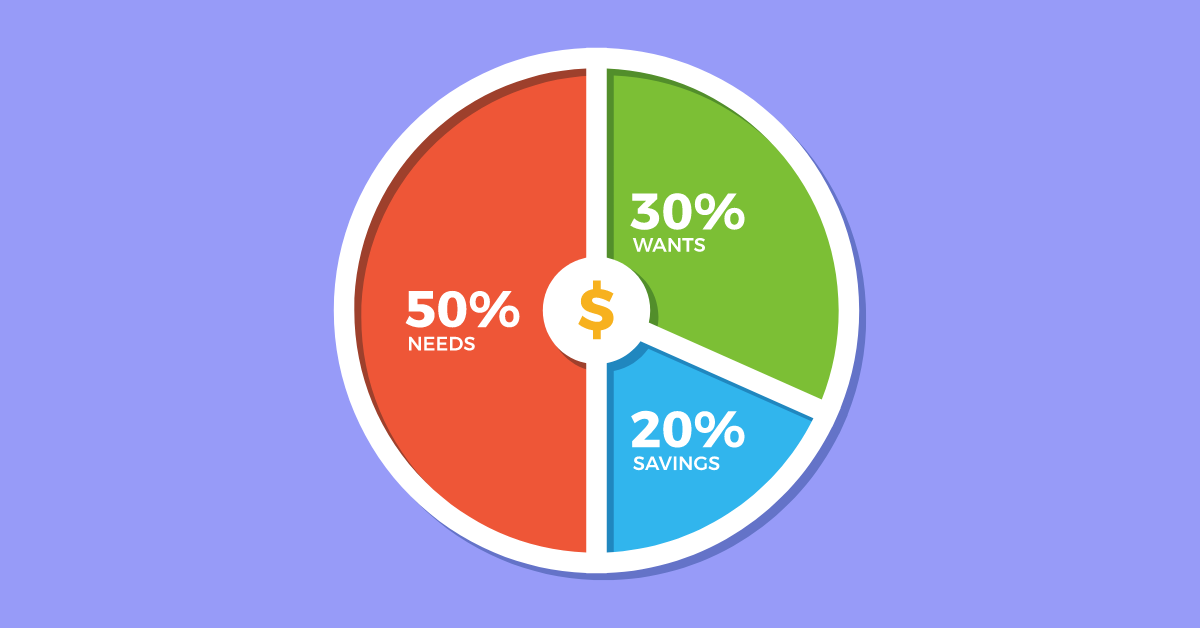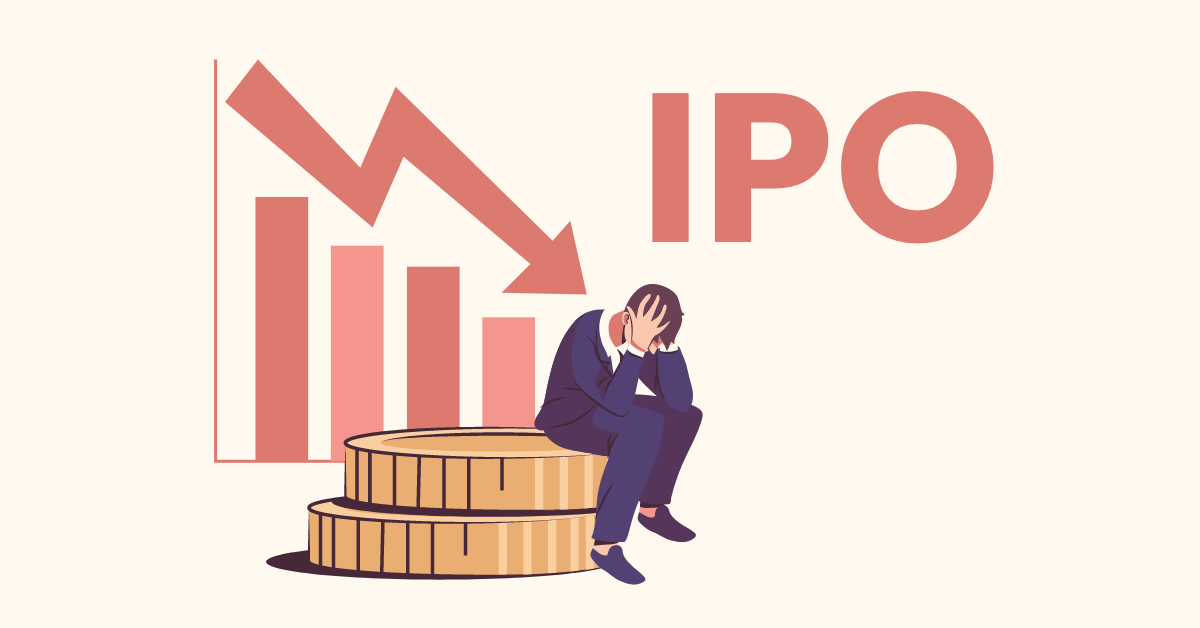National Stock Exchange of India (NSE) and Bombay Stock Exchange (BSE), the 2 public exchanges, are also counted among the largest exchanges in the world. In this blog, we touch upon some of the key features and history of NSE and BSE.
What is NSE?
National Stock Exchange of India Ltd. (NSE) was established in 1992 and commenced operations in 1994. NSE was set up by an assembly of leading financial institutions at the behest of the Indian government to bring transparency to the country’s capital markets.
NSE is India’s largest financial market and was the 1st exchange in India to provide fully automated electronic trading. Currently, NSE conducts transactions in the wholesale debt, equity, and derivative markets.
As of May 2021, NSE was the 10th largest exchange globally, going by market capitalization. On 4th April 2022, the market capitalization of all companies listed on NSE totalled ₹3,45,553,451 crores.
Key features of NSE:
- Traders can look up various trade and post-trade information as well as the total number of securities available for a transaction
- An automated trading system helps maintain transparency and consistency
- A high volume of trading activity
-
Major indices on NSE
– Nifty 50
– Nifty 100
– Nifty Next 50
– Nifty Midcap 50
– Nifty Smallcap 250
– India VIX
– Other thematic, strategy, hybrid and fixed-income indexes
Also Read: What Is The Difference Between Nifty and Sensex?
-
Investment segments
– Equity
– Debt
– Equity Derivatives
– Commodity Derivatives
– Currency Derivatives
– Interest Rate Derivatives
History of National Stock Exchange (NSE):
- 1992 – Incorporation
- 1994 – Commenced operations
- 2002 – Derivative trading started with the launch of index futures
- 2011 – Derivatives contracts launched on Dow Jones Industrial Average and S&P 500
- 2013 – Became India’s first debt platform
What is BSE?
Bombay Stock Exchange (BSE) was established in 1875 as the Native Share and Stock Brokers’ Association by Premchand Roychand. BSE was the 1st ever stock exchange in Asia. As of 4th April 2022, there are 5,254 companies listed on the BSE. In 2017, BSE became the 1st Indian exchange that got listed.
As of 4th April 2022, the market capitalization of all companies listed on BSE totalled ₹27,242,840.
Key Features:
- Securities issued by companies listed on BSE act as a collateral guarantee at the time of availing loans
-
Major indices
– S&P BSE SENSEX
– S&P BSE Auto
– S&P BSE Bankex
– S&P BSE Capital Goods
– S&P BSE Consumer durables
– S&P BSE Fast-moving consumer goods -
Investment segments
– Equity
– Debt
– Equity Derivatives
– Commodity Derivatives
– Interest Rate Derivatives
– Currency Derivatives
– Mutual funds
History of Bombay Stock Exchange (BSE):
- 1875 – Established
- 1957 – Granted permanent recognition under the Securities Contracts Regulation Act, 1956
- 1986 – S&P BSE SENSEX, India’s first equity index, was launched
- 1995 – BSE On-Line Trading (BOLT) system was introduced
- 2000 – Equity derivatives introduced
- 2001 – Index options, stocks options and futures were launched. All securities turn to T+5
- 2003 – T+2 settlement introduced
- 2005 – Becomes a corporate entity
- 2008 – Currency derivatives launched
- 2017 – Becomes India’s 1st listed exchange
Differences Between NSE and BSE
Among the difference mentioned above, trading volumes and the number of listed companies are the 2 major differences between NSE and BSE. People who prefer higher liquidity might prefer NSE due to the higher trading volumes. On BSE, due to the higher number of listed companies, you have a broader choice.
| Heading | NSE | BSE |
| Date of establishment | 1992 | 1875 |
| Benchmark Index | Nifty 50 | S&P BSE SENSEX |
| Network | Over 1500 cities | 450 cities |
| Companies listed(as of 04.04.2022) | Over 1,300 | 5,254 |
| Liquidity | Higher liquidity as the trading volumes are higher | Lower liquidity as the trading volumes are higher |
|
Market Capitalization(approx.)(As of May
2021) Source: INDMoney |
$3 trillion | $3.1 trillion |
Which is better, NSE or BSE?
The choice between NSE or BSE depends on the company you want to invest in or trade-in. Some stocks may be listed only on one of the exchanges. So, you would have to rely on the exchange that the stock is listed on.
For stocks listed on both exchanges, you could base your decision on trading volumes and the number of shares listed on each exchange.
If you are interested in the history of the Indian stock
exchange, read the following article:
The Historical Evolution of the Indian Stock
Market.
Discover stocks that suit certain filter criteria and dive into details to check their WealthBaskets.
At WealthDesk, you can invest in WealthBaskets. WealthBaskets are curated portfolios of stocks and ETFs made by SEBI registered professionals. Each WealthBasket is based on a particular theme and investment strategy.
FAQs
You can buy shares on one exchange and sell the same on another exchange only after the shares are credited to your Demat account.
It is better to trade on the exchange with a higher trading volume. This is because the higher trader volumes make it easier for you to find trades and make it easier for you to convert your investments into cash.
BSE and NSE are not the same. Bombay Stock Exchange (BSE) was established in 1875. The National Stock Exchange of India (NSE) was established in 1992.
Bombay Stock Exchange had a very humble beginning under a Banyan Tree in Mumbai’s town hall in 1875.


















